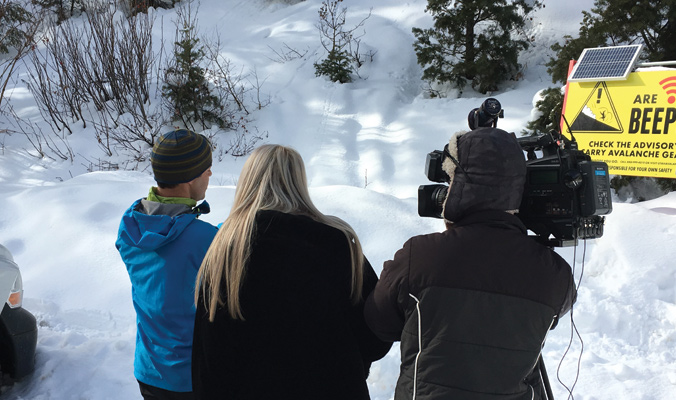The 2017 winter season—bringing record-breaking snowfall, high winds and extreme avy danger on more than one occasion—is over. And Utah has surfaced at the end of this season with the accomplishment of having experienced zero avy deaths. To talk about this milestone and learn more about the variables and influences with this auspicious null death toll, we caught up with the director of the Utah Avalanche Center Mark Staples.
Backcountry Magazine: It’s official, Utah had no avy deaths this winter. What are your thoughts on that achievement?
Mark Staples: There’s a lot of luck, both good and bad, involved in all of that. You could have a dozen people die in a single event due to bad luck, so I don’t want to downplay the role of chance in this. We also feel this is a story beyond us. It’s the efforts of the ski resorts, educators, guides and the media and weather forecasters that go on every night and help educate people about avalanches that really makes a difference. These things have all added up to make the level of awareness out in the backcountry an all-time high. This also means there’s more information that people are sharing about avalanches. So whether or not there were zero avalanches this year, or one or ten, there is no doubt that the level of knowledge, awareness and education is just continuing to skyrocket, and to me that is the big story.

Mark Staples does an interview while looking at an “Are You Beeping?” sign and beacon checker. [Photo] Greg Gagne
MS: One thing we do at the UAC is we track the number of people getting our emails, going onto our website, calling our hotline, and that has had an exponential increase. We graphed that number with the running five-year average of fatalities, and we are seeing that the number of people accessing backcountry info is skyrocketing, but the average of fatalities is on a downward trend. So what that means is that before people are out the door, they are getting the information.

Graph courtesy Utah Avalanche Center
One of the other aspects of this is that because of the storms we got this year, there were plenty of avalanches, but we didn’t have many on faceted layers buried in the snowpack. Most of the avalanche activity we had this year was storm related, which meant that the danger could drop pretty quickly. When we have deep persistent slab, people get impatient and they have a hard time waiting. They can wait a few days, but it is hard to wait or avoid avalanche terrain all season long—and people didn’t really have to do that this year.
BCM: You post a lot of observations to social media. Do you think that using this avenue made a difference this year?
MS: We—humans—are complicated animals and what helps one person make a decision may not help others. So in general we try to take a shotgun approach. There is not one single avenue for helping people so we just try as many things as possible and hopefully one of those things will work for someone out there. As humans, pulling out a textbook and reading is at the bottom of list when it comes to good ways to learn. What’s at the top is storytelling. My personal belief is that the closer we can get to storytelling and the farther we can get away from the textbook approach, the more successful we will be. Social media allows us to have that personal storytelling interaction with people.

The UAC staff learn how to use Instagram. [Photo] Courtesy UAC
MS: It definitely plays a role, but how much? We will never really know. In Utah, since KBYG’s inception, we’ve had almost 200,000 people participate in the presentation. So the launching of the revamped program a few years ago helped, but I think it’s the cumulative effect that starts to take hold. The 18-year-old kids that listened to the talk while they were in high school are now 28 years old, and that is our target audience today.

Logan Forecaster Toby Weed of UAC staff investigates an avalanche during a historic cycle in the Wellsville Range. [Photo] Courtesy UAC









Related posts: